Address
304 North Cardinal
St. Dorchester Center, MA 02124
Work Hours
Monday to Friday: 7AM - 7PM
Weekend: 10AM - 5PM
Address
304 North Cardinal
St. Dorchester Center, MA 02124
Work Hours
Monday to Friday: 7AM - 7PM
Weekend: 10AM - 5PM
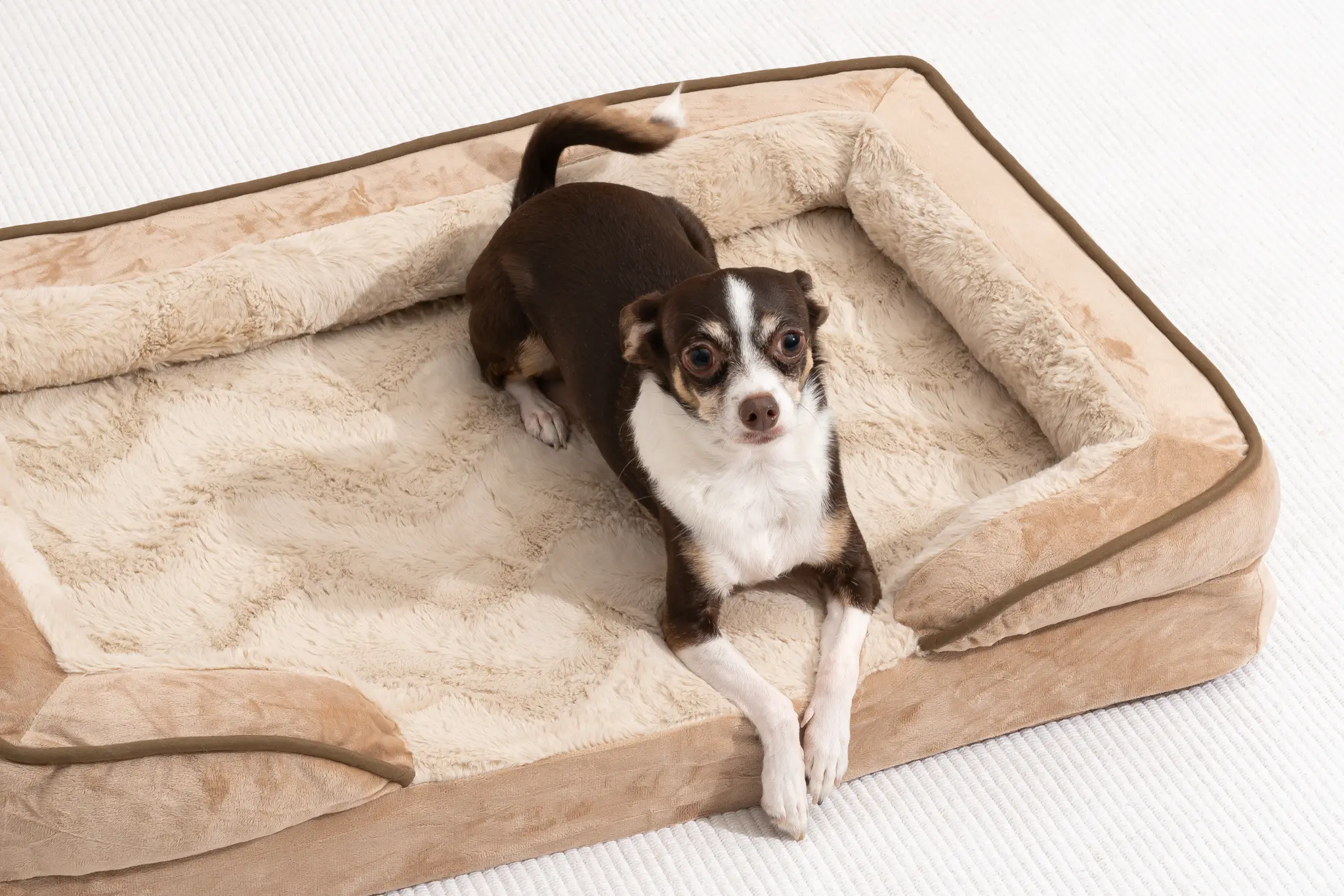
Providing your beloved canine companion with a comfortable and safe resting place is paramount to their overall health and happiness. While a sturdy dog house or a secure dog kennel offers essential shelter, it’s the dog house bedding inside that truly transforms it into a cozy sanctuary. Just like humans, dogs need a supportive, clean, and appropriately insulated sleeping surface to ensure restful sleep, protect their joints, and regulate their body temperature.
Choosing the ideal dog house bedding isn’t just about throwing an old blanket in a corner. It involves considering various factors, from your dog’s size, age, and breed to their unique sleeping habits and the climate they live in. The right bedding can prevent discomfort, reduce anxiety, and even aid in training. Conversely, inadequate bedding can lead to health issues, behavioral problems, and unnecessary wear and tear on your dog’s living space.
This comprehensive guide will walk you through everything you need to know about selecting the best dog kennel bedding, exploring different types, materials, and special considerations. We’ll delve into the nuances of insulation, durability, and ease of cleaning, ensuring you can make an informed decision that benefits your furry friend for years to come. Whether you’re setting up a new outdoor retreat or upgrading an existing indoor kennel, you’ll find all the insights necessary to create the perfect sleeping environment.
Table of Contents
ToggleThe importance of quality dog house bedding extends far beyond mere comfort. It plays a crucial role in your dog’s physical health, emotional well-being, and even their behavior. A well-chosen bed provides a sense of security, mimicking the den-like environment that dogs instinctively seek out. This can significantly reduce stress and anxiety, especially in puppies or dogs prone to nervousness.
Physically, proper dog kennel bedding offers essential joint support, which is particularly vital for large breeds, senior dogs, or those with existing orthopedic conditions like arthritis or hip dysplasia. A soft, supportive surface can alleviate pressure points, promote better circulation, and help prevent the development of painful calluses. During colder months, insulating bedding acts as a barrier against the cold ground, retaining body heat and protecting your dog from hypothermia. In warmer climates, breathable materials can help dissipate heat, preventing overheating.
Furthermore, appropriate bedding contributes to better hygiene. Washable covers and materials prevent the buildup of dirt, dander, allergens, and pests, leading to a cleaner environment for your dog and a healthier home for you. It also helps contain shedding and can make routine cleaning of the dog house or kennel much simpler.
To understand the foundational aspects of setting up a comfortable space for your dog, including the various types of bedding available, you can explore our in-depth article: A Beginner’s Guide to Dog Kennel Bedding Types: Everything You Need to Know.
When it comes to dog house bedding, you’ll find a diverse array of options, each designed to meet specific needs and preferences. Understanding these types is the first step in creating the perfect resting spot for your canine companion.
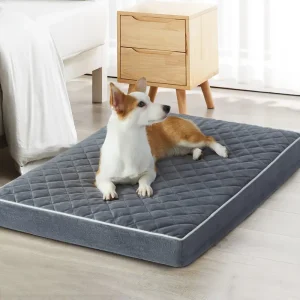
These are often flat, rectangular, and resemble human mattresses. They come in various thicknesses and fillings, providing ample space for dogs who like to stretch out while sleeping. They are excellent for larger dog houses or kennels where space isn’t a primary concern.

Similar to mattresses but often softer and less structured, these provide a plush surface for dogs who enjoy sinking into their bedding. They are versatile and can be used alone or as an added layer of comfort.
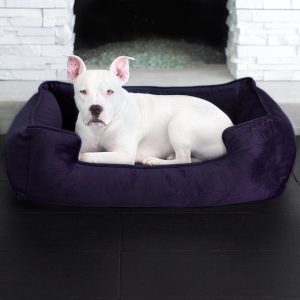
Characterized by raised edges or bolsters, these beds offer a sense of security and a comfortable headrest. Dogs who like to curl up or lean against something often prefer these. The bolsters can also provide extra insulation.
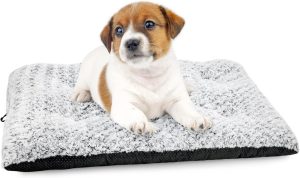
Specifically designed to fit inside dog crates or kennels, these are typically thinner and more durable. They offer a basic layer of comfort and protection, often with non-slip bottoms.
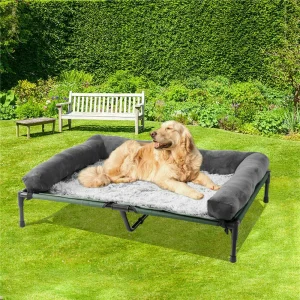
These beds lift your dog off the ground, promoting airflow underneath. While not traditional “bedding” in the sense of soft fill, they are excellent for outdoor dog houses in warm climates as they prevent heat transfer from the ground and keep your dog cool. They can also be paired with blankets or thin pads for added comfort.
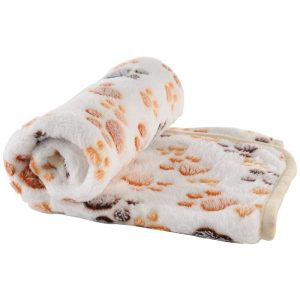
While often used as an accessory, blankets can serve as primary bedding for some dogs, especially those who like to burrow or nest. They offer versatility in layering for warmth or softness.
The choice of filling material within mattresses and cushions is crucial for support and comfort. For a detailed breakdown of common filling materials and their benefits, particularly for joint health, delve into our comparison: [Link to: Memory Foam vs. Shredded Foam Dog Beds: A Detailed Bedding Comparison].
For older dogs, or those with specific joint needs, specialized bedding can make a world of difference. Discover the top recommendations in our dedicated guide: [Link to: The 5 Best Orthopedic Dog House Mattresses for Senior Dogs (2025 Edition)].
The material of your dog house bedding is arguably the most critical factor, influencing comfort, durability, insulation, and ease of cleaning. Different materials offer distinct advantages depending on your dog’s needs and the environment.
Incredibly soft and warm, fleece is an excellent choice for colder climates or dogs who love to snuggle. It’s often machine-washable and dries relatively quickly.
Breathable and soft, cotton is a natural fiber that’s comfortable in various temperatures. Organic cotton options are great for dogs with sensitive skin or allergies. It’s generally easy to wash.
These are common due to their durability, affordability, and resistance to shrinking and wrinkling. Many synthetic beds are designed to be water-resistant or quick-drying.
Known for its extreme durability and water resistance, ballistic nylon is often used in chew-proof or outdoor bedding. It’s easy to wipe clean but can be less soft than other materials.
Soft, absorbent, and often hypoallergenic, microfiber is a popular choice for plush beds. It can trap dirt and hair effectively.
A heavy-duty, durable material, canvas is excellent for active dogs or outdoor use. It’s resistant to tears and often easy to spot clean.
Insulation: For cold weather, materials that trap air, like fleece, wool, or thick synthetic fills, are essential. Some beds also incorporate self-warming technology. To ensure your dog stays cozy when temperatures drop, explore our guide on insulating options: [Link to: The Best Insulating Dog Bedding to Keep Your Pup Warm All Winter].
Breathability: In warmer climates, breathable materials like cotton or elevated mesh beds prevent heat buildup and allow for better airflow, keeping your dog cool.
Water Resistance/Waterproof: This is crucial for outdoor dog houses, puppies, or incontinent senior dogs. Look for beds with waterproof liners or covers that can be easily wiped down.
Chew-Proof: If your dog is a notorious chewer, selecting materials like ballistic nylon or even aluminum-framed beds with durable fabrics is paramount. Investing in chew-proof bedding can save you money and frustration in the long run. Find the most resilient options in our dedicated article: [Link to: Chew-Proof Dog House Bedding: Our Top Picks for Indestructible Blankets and Beds].
Hypoallergenic: For dogs with allergies or sensitive skin, opt for natural, untreated cotton, bamboo, or specific hypoallergenic synthetic fills to prevent skin irritation.
Beyond manufactured beds, some owners opt for natural or DIY solutions, especially for outdoor dog houses. Materials like straw (changed regularly to prevent pests and moisture), cedar chips (for natural pest deterrence, though some dogs may be sensitive to the scent), or repurposed blankets can provide comfort. However, it’s crucial to ensure these options are safe, clean, and provide adequate insulation and support. For those interested in sustainable or homemade solutions, our guide offers valuable insights: [Link to: The Best Natural and DIY Dog Bedding Materials for Your Dog House].
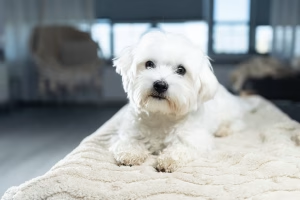
Puppies have unique requirements. They are often prone to accidents during house training and love to chew. Therefore, puppy bedding needs to be:
Waterproof or water-resistant covers and machine-washable materials are non-negotiable.
While no bedding is truly “indestructible” for a determined puppy, choosing robust materials can prevent rapid destruction and ingestion of unsafe parts.
For crate training, the bed should fit snugly in the crate, allowing just enough room for the puppy to lie down comfortably, discouraging them from soiling one end and sleeping in the other.
A soft, cozy surface can help a puppy feel secure in their new environment.
For a comprehensive guide on selecting the ideal bedding for your young canine, including crate pads and training blankets, refer to: [Link to: Dog Bedding for Puppies: The Complete Guide to Crate Pads and Training Blankets].

Older dogs often suffer from arthritis, joint pain, and reduced mobility. Their bedding needs to provide superior support and ease of access:
Memory foam or high-density foam mattresses are crucial for cushioning joints and relieving pressure points. These materials conform to your dog’s body, providing even support.
Beds that are lower to the ground are easier for senior dogs to get in and out of, preventing strain on their aging joints.
Older dogs may be more susceptible to cold, so insulating materials and even self-warming beds can be beneficial.
Incontinence can be an issue with senior dogs, making easily washable and waterproof bedding essential for hygiene.

As mentioned earlier, some dogs have a strong chewing instinct. For these “power chewers,” standard bedding won’t last. Look for:
These materials are designed to withstand significant chewing and scratching.
Prevents dogs from finding weak points to start tearing.
While the fabric can still be chewed, the overall structure is more resistant.
Focus on thick, insulating materials like fleece, wool, or beds with thermal layers. Heated beds are also an option for extreme cold.
Prioritize breathable materials like cotton, mesh, or elevated beds that allow for maximum airflow to keep your dog cool. Cooling gel mats can also be placed on top of existing bedding.
Even the best dog house bedding won’t last if it’s not properly maintained. Regular cleaning is essential for hygiene, odor control, and extending the lifespan of your investment.
Daily Shake-Out/Vacuum: Remove loose hair, dirt, and debris daily to prevent accumulation.
Regular Washing: Most dog beds come with removable, machine-washable covers. Follow the manufacturer’s instructions for washing and drying. For beds without removable covers, spot clean regularly and consider professional cleaning or hand-washing if feasible.
Deep Cleaning: Periodically, you’ll want to deep clean the entire bed, including the inner fill if possible, to eliminate odors, allergens, and pests.
Pest Control: Regularly inspect bedding for fleas, ticks, or other pests, especially if your dog spends time outdoors. Wash bedding in hot water to kill any unwelcome visitors.
Rotate and Flip: Just like human mattresses, rotating and flipping dog beds can help maintain their shape and prevent premature wear in specific spots.
Protective Covers: Using additional waterproof or durable covers can protect the primary bedding from spills, dirt, and light chewing.
Address Chewing Promptly: If your dog starts to chew, address the behavior immediately with training or by providing appropriate chew toys. Investing in chew-proof bedding is also a proactive step.
Store Properly: When not in use, store bedding in a clean, dry place to prevent mold, mildew, and pest infestation.
For those who prioritize ease of cleaning, there are many excellent options available. Discover our top recommendations for low-maintenance solutions: [Link to: The Best Machine-Washable Dog Bedding: Our Top 5 Picks for Easy Cleaning].
Choosing the ultimate dog house bedding for your furry friend is a significant decision that impacts their comfort, health, and happiness. By considering all the factors discussed in this guide, you’re well on your way to making an informed choice.
Dog’s Size and Age: Ensure the bedding is appropriately sized and provides the right support, especially for puppies or senior dogs.
Sleeping Habits: Observe how your dog sleeps (curled up, stretched out) to determine the best bed shape and firmness.
Climate: Select materials that offer adequate insulation for cold weather or breathability for warm climates.
Chewing Habits: If your dog is a chewer, prioritize durable and chew-resistant materials.
Ease of Cleaning: Opt for machine-washable covers or waterproof materials for convenient maintenance.
Budget: High-quality bedding is an investment, but there are excellent options across all price points.
You don’t have to break the bank to provide your dog with a comfortable bed. Explore our top recommendations for quality bedding that won’t empty your wallet: [Link to: Budget-Friendly Dog Bedding: Quality Mattresses and Blankets Under $50].
For ultimate convenience and a curated selection, consider all-in-one solutions that provide everything your dog needs for their house or kennel: [Link to: Dog House Bedding Kits: The Best All-in-One Solutions for Your Pup’s Comfort].
Ultimately, the best dog house bedding is one that your dog loves, feels safe and comfortable in, and that meets your practical needs for durability and maintenance. By investing time in researching and selecting the right bedding, you’re investing in your dog’s long-term well-being.